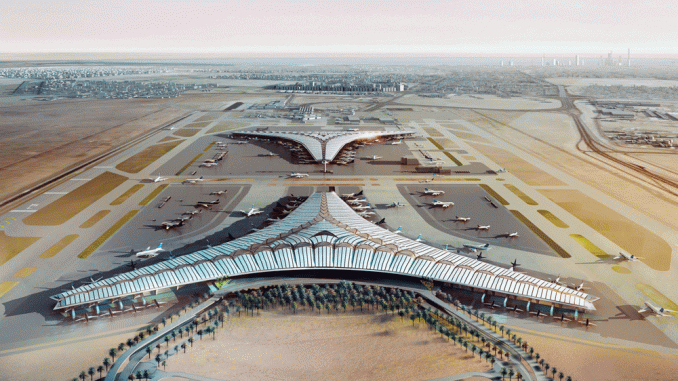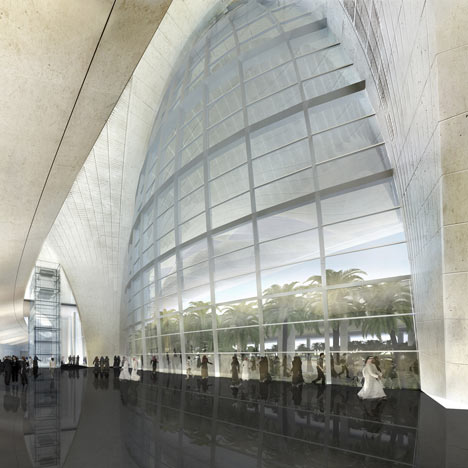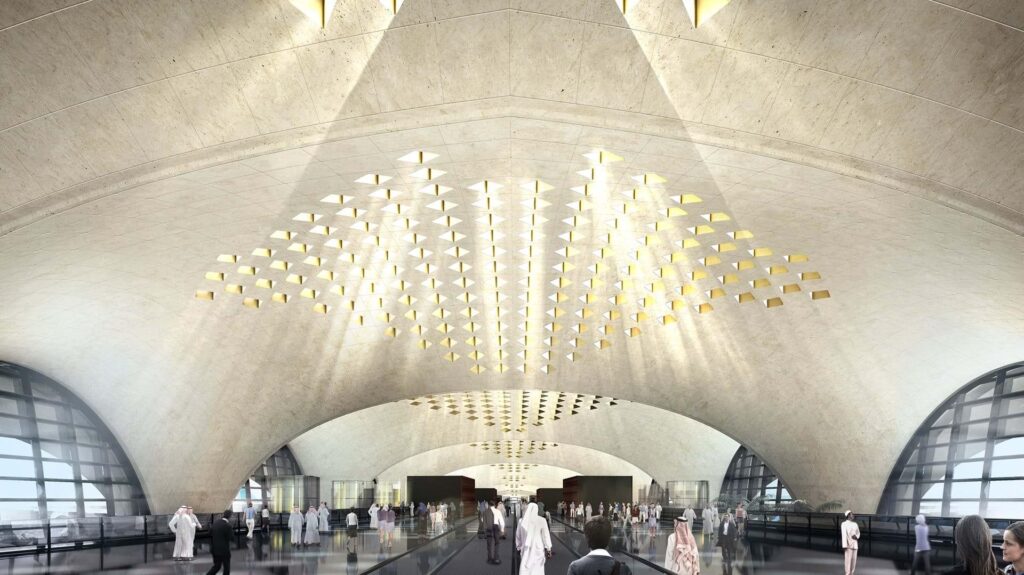Kuwait International Airport Passenger Terminal 2, Kuwait
Architects: Foster + Partners
Client: Ministry of Public Works
Services: Scheme Design, Detailed Design, Construction support
Location: Sabhan, Kuwait
Currently under construction and due to completion in August 2022, the new Kuwait International Airport passenger Terminal 2 is planned to significantly increase capacity and establish a new regional air hub in the Gulf as well as the gateway to the State of Kuwait. Terminal 2 will expand the airport's overall capacity to 25–50 million passengers per year through the introduction of a building with a trefoil plan, comprising three symmetrical wings of departure gates. The new Terminal building complex includes a building with a basement, a ground and two floors, multi-storeys car parks with 4,500 car spaces, 28 Terminal Gates, including 8 Gates for Airbus A380 and a transit hotel. Each Terminal building façade spans 1.2 kilometres and all extend from a dramatic 25-metre-high central space. The building is planned under a single roof canopy, punctuated by glazed openings that filter daylight, while deflecting direct solar radiation. The canopy extends to shade a generous entrance plaza and is supported by tapering concrete columns – their fluid, organic forms draw inspiration from the contrast between the solidity of the stone and the shape and movement of Kuwait’s traditional dhow sailing boats. The project targets LEED ‘gold’ and it aims to be the first passenger terminal in the world to attain this level of environmental accreditation. The concrete structure provides thermal mass and the roof incorporates a large expanse of photovoltaic panels to harvest solar energy. Taking into account the large volumes within the Terminal and the materials used in the architectural features, the acoustic design focused on the assessment of the room acoustics of the various spaces within the airport, to achieve the suitable level of reverberation time and speech intelligibility for public and emergency announcements. In addition, the façade sound insulation has been established to control the aircraft noise ingress to the Terminal building, considering the large areas of glazing. Finally the building services noise has been controlled to achieve the suitable level of background noise within each areas for intelligibility and privacy. Support during construction has been provided to answer to RFIs and design changes to meet the acoustic design intents.






